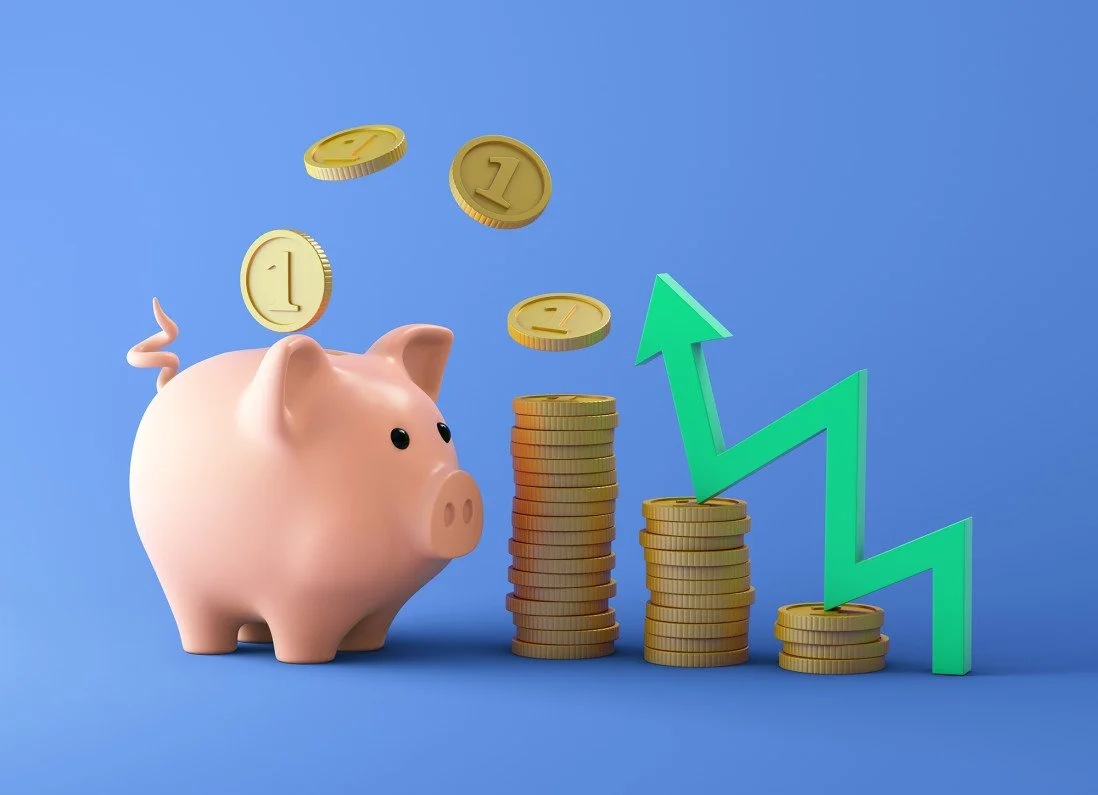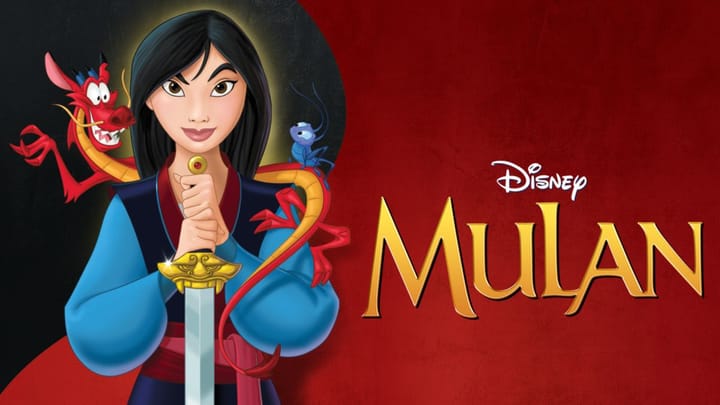【逐句精讲YouTube影片学英文】30分钟内 Ray Dalio 告诉你 💰 经济机器如何运转 💸
How The Economic Machine Works by Ray Dalio

透过逐句解析 YouTube 英文影片的精彩对白,带你轻松掌握地道英文表达——最适合想在线学英文、喜欢在线看影片学英文的你,边看电影边学,马上开口说!
🎯 文章导航
💡
Discover useful everyday expressions, funny lines, and natural English from many hit TV shows. Watch, learn, and improve your English fast on bella-languages.com!
收看影片
原声音频

30分钟内 Ray Dalio 告诉你 💰 经济机器如何运转
0:00
/1830.917333
逐句精讲

How the economic machine works, in 30 minutes.
经济这台机器是如何运作的,只需30分钟就能搞懂。
经济这台机器是如何运作的,只需30分钟就能搞懂。
📝 词汇精讲:
- How... work(s):常见的句子结构,表示 “……是如何运作的”
- economic machine:字面意思是“经济机器”,是一种比喻
- in 30 minutes:在30分钟之内
The economy works like a simple machine. But many people don't understand it — or they don't agree on how it works — and this has led to a lot of needless economic suffering.
但很多人并不理解它 — 或者说,他们对它是如何运作的并没有共识 — 这导致了许多原本可以避免的经济痛苦。
但很多人并不理解它 — 或者说,他们对它是如何运作的并没有共识 — 这导致了许多原本可以避免的经济痛苦。
📝 词汇精讲:
- agree on:就……达成一致意见
- how it works:它是如何运作的
- needless:不必要的、可以避免的
- economic suffering:经济上的痛苦,比如失业、贫穷、经济危机等
I feel a deep sense of responsibility to share my simple but practical economic template.
我感到有一种强烈的责任感,要分享我这个简单却实用的经济模板。
我感到有一种强烈的责任感,要分享我这个简单却实用的经济模板。
📝 词汇精讲:
- deep sense of responsibility:强烈的责任感
- simple but practical:简单却实用
- economic template:经济模板
👉 template 指“模板、范式、模式”,在这里是指经济运作的框架或模型
Though it's unconventional, it has helped me to anticipate and sidestep the global financial crisis, and has worked well for me for over 30 years. Let's begin.
虽然它不太符合传统观点,但它帮我预见并避开了全球金融危机,而且在过去三十多年里一直对我非常有效。我们开始吧。
虽然它不太符合传统观点,但它帮我预见并避开了全球金融危机,而且在过去三十多年里一直对我非常有效。我们开始吧。
📝 词汇精讲:
- unconventional:非传统的、非主流的、不按常规的
- anticipate:预见,预判(强调提前意识到危机)
- sidestep:避开,闪躲
- global financial crisis:全球金融危机

Though the economy might seem complex, it works in a simple, mechanical way.
虽然经济看起来可能很复杂,但它其实是以一种简单、机械的方式运作的。
虽然经济看起来可能很复杂,但它其实是以一种简单、机械的方式运作的。
📝 词汇精讲:
- in a ... way:以一种……方式
- mechanical:机械式的、像机器一样的(强调经济运作的规律性、结构性,就像机器一样)
It's made up of a few simple parts and a lot of simple transactions that are repeated over and over again a zillion times.
它是由几个简单的部分,以及大量不断重复的简单交易组成的——重复了无数次。
它是由几个简单的部分,以及大量不断重复的简单交易组成的——重复了无数次。
📝 词汇精讲:
- It's made up of:是由……组成的
👉 原型是 make up(构成),被动变成 be made up of
例:The human body is made up of cells. 人体是由细胞组成的。
- transaction:交易
- over and over again:一遍又一遍地,反复发生
- a zillion times:无数次,成千上万次
These transactions are above all else driven by human nature, and they create 3 main forces that drive the economy.
这些交易最根本地是由人性所驱动的,它们产生了推动经济的三大主要力量。
这些交易最根本地是由人性所驱动的,它们产生了推动经济的三大主要力量。
📝 词汇精讲:
- are driven by:被……驱动
👉 动词原形是 drive,引申义是“推动、驱动”,用于表达行为背后的动力
例:The company is driven by innovation. 这家公司以创新为驱动力。
- human nature:人性(人类本性)
- above all else:最重要的是、首先是
Number 1: Productivity growth 第一:生产力增长
Number 2: The Short term debt cycle 第二:短期债务周期
And Number 3: The Long term debt cycle 第三:长期债务周期
Number 2: The Short term debt cycle 第二:短期债务周期
And Number 3: The Long term debt cycle 第三:长期债务周期
We'll look at these three forces and how laying them on top of each other creates a good template for tracking economic movements and figuring out what's happening now.
我们将探讨这三种力量,以及把它们叠加在一起如何构成一个很好的模板,用来追踪经济动向并理解当前正在发生什么。
我们将探讨这三种力量,以及把它们叠加在一起如何构成一个很好的模板,用来追踪经济动向并理解当前正在发生什么。
📝 词汇精讲:
- how... creates a good template:……如何构建一个很好的模板
- laying them on top of each other:把它们叠加在一起
👉 laying:动词 lay 的现在分词,意为 “放置”
👉 them:指这三种力量
👉 on top of each other:叠加在一起。 - figuring out:(原形是 figure out)弄清楚,理解。
例:I need to figure this out. 我得搞清楚这事儿。
Let's start with the simplest part of the economy: Transactions.
让我们从经济中最简单的部分开始:交易。
让我们从经济中最简单的部分开始:交易。
An economy is simply the sum of the transactions that make it up and a transaction is a very simple thing. You make transactions all the time.
经济就是组成它的所有交易的总和,而交易本身是非常简单的事情。你一直在进行各种交易。
经济就是组成它的所有交易的总和,而交易本身是非常简单的事情。你一直在进行各种交易。
📝 词汇精讲:
- the sum of:……的总和
- make it up:组成它(经济)
Every time you buy something you create a transaction.
每次你买东西时,都会产生一次交易。
每次你买东西时,都会产生一次交易。
Each transaction consists of a buyer exchanging money or credit with a seller for goods, services or financial assets.
每一笔交易都包括买方向卖方用现金或信用交换商品、服务或金融资产。
每一笔交易都包括买方向卖方用现金或信用交换商品、服务或金融资产。
📝 词汇精讲:
- consists of:由……组成,构成
例:The team consists of five players. 这个团队由五名队员组成。
- credit:信用(可以理解为借贷、赊账或信用卡支付等)
- goods:商品,实物产品
- services:服务,比如理发、修理、咨询等
- financial assets:金融资产,如股票、债券、基金等

Credit spends just like money, so adding together the money spent and the amount of credit spent, you can know the total spending.
信用的花法就像现金一样,所以把花出去的现金和使用的信用额度加在一起,你就能知道总支出是多少。
信用的花法就像现金一样,所以把花出去的现金和使用的信用额度加在一起,你就能知道总支出是多少。
The total amount of spending drives the economy.
总支出推动着经济的发展。
总支出推动着经济的发展。
If you divide the amount spent by the quantity sold, you get the price. And that's it. That's a transaction.
如果你用花出去的总金额除以售出的数量,你就得到了价格。就是这样。这就是一笔交易。
如果你用花出去的总金额除以售出的数量,你就得到了价格。就是这样。这就是一笔交易。
📝 词汇精讲:
- you divide A by B:你用 A 除以 B
✅ divide A by B 是“用 A 除以 B”的标准结构。 - the amount spent:花出去的金额(支出总额)
- the quantity sold:售出的数量
- you get the price:你就得到价格
💡
这句话的意思是:总金额 ÷ 数量 = 单价
比如:总共花了 100 元买了 5 个商品
价格就是:100 ÷ 5 = 20 元/个。
比如:总共花了 100 元买了 5 个商品
价格就是:100 ÷ 5 = 20 元/个。
It is the building block of the economic machine.
它是经济机器的基本构成单元。
它是经济机器的基本构成单元。
📝 词汇精讲:
- the building block:构成块、基本单元、基础要素
👉 这是一个常用比喻,意指“构成更大系统的基本部分”,类似“砖块之于建筑”。
All cycles and all forces in an economy are driven by transactions.
经济中的所有周期和所有力量,都是由交易推动的。
经济中的所有周期和所有力量,都是由交易推动的。
So, if we can understand transactions, we can understand the whole economy.
所以,如果我们能理解交易,我们就能理解整个经济。
所以,如果我们能理解交易,我们就能理解整个经济。
A market consists of all the buyers and all the sellers making transactions for the same thing.
一个市场由所有买家和所有卖家组成,他们围绕同一种商品进行交易。
一个市场由所有买家和所有卖家组成,他们围绕同一种商品进行交易。
For example, there is a wheat market, a car market, a stock market and markets for millions of things.
例如,有小麦市场、汽车市场、股票市场,还有成千上万种东西的市场。
例如,有小麦市场、汽车市场、股票市场,还有成千上万种东西的市场。
💡
Ray Dalio 在这里继续强调一个关键点:每一种商品或资产,只要有人买、有人卖,就会形成一个市场。
An economy consists of all of the transactions in all of its markets.
一个经济体由其所有市场中的所有交易构成。
一个经济体由其所有市场中的所有交易构成。
If you add up the total spending and the total quantity sold in all of the markets, you have everything you need to know to understand the economy. It's just that simple.
如果你把所有市场中的总支出和总销售数量加总起来,你就拥有了理解经济所需的全部信息。就是这么简单。
如果你把所有市场中的总支出和总销售数量加总起来,你就拥有了理解经济所需的全部信息。就是这么简单。
People, businesses, banks and governments all engage in transactions the way I just described: exchanging money and credit for goods, services and financial assets.
人们、企业、银行和政府都以我刚才描述的方式进行交易:用现金和信用交换商品、服务以及金融资产。
人们、企业、银行和政府都以我刚才描述的方式进行交易:用现金和信用交换商品、服务以及金融资产。
📝 词汇精讲:
- engage in:表示 “参与、从事” 某项活动
The biggest buyer and seller is the government, which consists of two important parts: a Central Government that collects taxes and spends money......and a Central Bank, which is different from other buyers and sellers because it controls the amount of money and credit in the economy.
最大的买家和卖家是政府,政府由两个重要部分组成:一个负责征税和花钱的中央政府……还有一个中央银行,中央银行不同于其他买家和卖家,因为它控制着经济中的货币和信用量。
最大的买家和卖家是政府,政府由两个重要部分组成:一个负责征税和花钱的中央政府……还有一个中央银行,中央银行不同于其他买家和卖家,因为它控制着经济中的货币和信用量。
It does this by influencing interest rates and printing new money.
它通过调节利率和印刷新货币来实现这一点。
它通过调节利率和印刷新货币来实现这一点。
📝 词汇精讲:
- by influencing:通过影响,调节...
- interest rates 利率(银行贷款或存款的利息比例)
For these reasons, as we'll see, the Central Bank is an important player in the flow of Credit.
基于这些原因,正如我们接下来会看到的,中央银行是信用流动中的重要角色。
基于这些原因,正如我们接下来会看到的,中央银行是信用流动中的重要角色。
📝 词汇精讲:
- an important player:一个重要参与者
- in the flow of Credit:在信用流动中(指经济中借贷、信贷资金的流转)
I want you to pay attention to credit. Credit is the most important part of the economy, and probably the least understood.
我希望你关注信用。信用是经济中最重要的部分,同时也可能是最不被理解的部分。
我希望你关注信用。信用是经济中最重要的部分,同时也可能是最不被理解的部分。
It is the most important part because it is the biggest and most volatile part.
它是最重要的部分,因为它既是最大的部分,也是最不稳定的部分。
它是最重要的部分,因为它既是最大的部分,也是最不稳定的部分。
📝 词汇精讲:
- volatile /ˈvɑːlət(ə)l/ 指波动大,易变动,有时剧烈变化
Just like buyers and sellers go to the market to make transactions, so do lenders and borrowers.
正如买家和卖家去市场进行交易一样,借贷双方(贷款人和借款人)也会这样做。
正如买家和卖家去市场进行交易一样,借贷双方(贷款人和借款人)也会这样做。
Lenders usually want to make their money into more money and borrowers usually want to buy something they can't afford, like a house or car or they want to invest in something like starting a business.
贷款人通常希望让他们的钱变成更多的钱,而借款人通常想购买他们负担不起的东西,比如房子或汽车,或者他们想投资一些事情,比如创业。
贷款人通常希望让他们的钱变成更多的钱,而借款人通常想购买他们负担不起的东西,比如房子或汽车,或者他们想投资一些事情,比如创业。
Credit can help both lenders and borrowers get what they want.
信用可以帮助贷款人和借款人都实现他们的目标。
信用可以帮助贷款人和借款人都实现他们的目标。
Borrowers promise to repay the amount they borrow, called the principal, plus an additional amount, called interest.
借款人承诺偿还他们借的钱,这部分钱叫本金,还有额外的一笔钱,叫利息。
借款人承诺偿还他们借的钱,这部分钱叫本金,还有额外的一笔钱,叫利息。
When interest rates are high, there is less borrowing because it's expensive.
当利率高时,借款减少,因为借钱成本高。
当利率高时,借款减少,因为借钱成本高。
When interest rates are low, borrowing increases because it's cheaper.
当利率低时,借款增加,因为借钱更便宜。
当利率低时,借款增加,因为借钱更便宜。
When borrowers promise to repay and lenders believe them, credit is created.
当借款人承诺偿还且贷款人相信他们时,信用就产生了。
当借款人承诺偿还且贷款人相信他们时,信用就产生了。
Any two people can agree to create credit out of thin air!
任何两个人都可以同意凭空创造信用!
任何两个人都可以同意凭空创造信用!
That seems simple enough but credit is tricky because it has different names.
这看起来很简单,但信用很复杂,因为它有不同的名称。
这看起来很简单,但信用很复杂,因为它有不同的名称。
As soon as credit is created, it immediately turns into debt.
信用一旦产生,立刻就变成了债务。
信用一旦产生,立刻就变成了债务。

Debt is both an asset to the lender, and a liability to the borrower.
债务对贷款人来说是资产,对借款人来说是负债。
债务对贷款人来说是资产,对借款人来说是负债。
📝 词汇精讲:
- liability /ˌlaɪəˈbɪləti/ 欠债;负债;债务
In the future, when the borrower repays the loan, plus interest, the asset and liability disappear and the transaction is settled.
将来,当借款人偿还本金和利息时,资产和负债就会消失,交易也就完成了。
将来,当借款人偿还本金和利息时,资产和负债就会消失,交易也就完成了。
📝 词汇精讲:
- loan /loʊn/ 贷款;借款
So, why is credit so important? Because when a borrower receives credit, he is able to increase his spending.
那么,为什么信用如此重要呢?因为当借款人获得信用时,他能够增加支出。
那么,为什么信用如此重要呢?因为当借款人获得信用时,他能够增加支出。
And remember, spending drives the economy.
记住,支出推动经济发展。
记住,支出推动经济发展。
This is because one person's spending is another person's income.
这是因为一个人的支出就是另一个人的收入。
这是因为一个人的支出就是另一个人的收入。
Think about it, every dollar you spend, someone else earns. And every dollar you earn, someone else has spent.
想想看,你花的每一美元,别人都在赚取;而你赚的每一美元,也都是别人花出去的。
想想看,你花的每一美元,别人都在赚取;而你赚的每一美元,也都是别人花出去的。
So when you spend more, someone else earns more.
所以,当你花得更多,别人也会赚得更多。
所以,当你花得更多,别人也会赚得更多。
When someone's income rises, it makes lenders more willing to lend him money because now he's more worthy of credit.
当一个人的收入增加时,贷款人会更愿意借钱给他,因为他现在更值得信赖。
当一个人的收入增加时,贷款人会更愿意借钱给他,因为他现在更值得信赖。
A creditworthy borrower has two things: the ability to repay and collateral.
一个有信用的借款人具备两样东西:偿还能力和抵押品。
一个有信用的借款人具备两样东西:偿还能力和抵押品。
📝 词汇精讲:
- collateral /kəˈlætərəl/ 抵押物;担保品
Having a lot of income in relation to his debt gives him the ability to repay.
相对于债务,他拥有较高的收入,这赋予他偿还能力。
相对于债务,他拥有较高的收入,这赋予他偿还能力。
📝 词汇精讲:
- in relation to...:相对于...
例:The money he'd been ordered to pay was minimal in relation to his salary. 他被要求支付的钱与他的薪水相比是少的。
In the event that he can't repay, he has valuable assets to use as collateral that can be sold. This makes lenders feel comfortable lending him money.
如果他无法偿还贷款,他有可以出售的有价值资产作为抵押。这让贷款人放心借钱给他。
如果他无法偿还贷款,他有可以出售的有价值资产作为抵押。这让贷款人放心借钱给他。
📝 词汇精讲:
- in the event that:如果,假如,万一发生的话
So increased income allows increased borrowing which allows increased spending.
因此,收入的增加使得人们能够借更多的钱,而借款的增加又带来了更多的支出。
因此,收入的增加使得人们能够借更多的钱,而借款的增加又带来了更多的支出。
And since one person's spending is another person's income, this leads to more increased borrowing and so on.
而且由于一个人的支出就是另一个人的收入,这就会导致借款进一步增加,循环往复。
而且由于一个人的支出就是另一个人的收入,这就会导致借款进一步增加,循环往复。
This self-reinforcing pattern leads to economic growth and is why we have Cycles.
这种自我强化的模式会带来经济增长,也正是我们会经历经济周期的原因。
这种自我强化的模式会带来经济增长,也正是我们会经历经济周期的原因。
📝 词汇精讲:
- self-reinforcing:形容词,意思是“自我强化的、自我加强的”。
👉 来自动词 reinforce(强化、加强),加上 self- 表示 “它会不断地推动自身变得更强”。
In a transaction, you have to give something in order to get something.
在一笔交易中,你必须给予一些东西,才能获得别的东西。
在一笔交易中,你必须给予一些东西,才能获得别的东西。
And how much you get depends on how much you produce.
你获得多少,取决于你产出多少。
你获得多少,取决于你产出多少。
Over time, we learned, and that accumulated knowledge raises our living standards, we call this productivity growth.
随着时间的推移,我们不断学习,积累的知识提高了我们的生活水平。我们称之为“生产力增长”。
随着时间的推移,我们不断学习,积累的知识提高了我们的生活水平。我们称之为“生产力增长”。
📝 词汇精讲:
- accumulated /əˈkjuːmjəleɪtɪd/ 累计的(accumulate 的过去式与过去分词)
- living standards:生活水平
Those who are invented and hard-working raise their productivity and their living standards faster than those who are complacent and lazy, but that isn't necessarily true over the short run.
那些有创造力且勤奋努力的人,比那些自满懒惰的人更快地提高了他们的生产力和生活水平,但这种情况在短期内并不一定成立。
那些有创造力且勤奋努力的人,比那些自满懒惰的人更快地提高了他们的生产力和生活水平,但这种情况在短期内并不一定成立。
📝 词汇精讲:
- com·pla·cent /kəmˈpleɪs(ə)nt/ too satisfied with yourself or with a situation, so that you do not feel that any change is necessary 自满的;自鸣得意的;
- over the short run:短期内,指在短时间内,通常是指未来几天、几周或几个月内。
Productivity matters most in the long run, but credit matters most in the short run.
从长期来看,生产力最重要;但从短期来看,信贷最关键。
从长期来看,生产力最重要;但从短期来看,信贷最关键。
📝 词汇精讲:
- in the long run:在长期来看:指的是某个事物或决策在未来较长的时间内的影响和结果。
- in the short run:在短期来看:通常用于描述某个计划、决策或行动在开始阶段的影响和效果。
This is because productivity growth doesn't fluctuate much, so it's not a big driver of economic swings.
这是因为生产力的增长波动不大,因此它不是经济波动的主要推动力。
这是因为生产力的增长波动不大,因此它不是经济波动的主要推动力。
📝 词汇精讲:
- fluc·tu·ate /ˈflʌktʃueɪt/ to change frequently in size, amount, quality, etc., especially from one extreme to another (大小、数量、质量等)波动;(在…之间)起伏不定
例:fluctuating prices 波动的价格
例:During the crisis, oil prices fluctuated between $20 and $40 a barrel. 在危机时期,每桶石油价格在20元至40元之间波动。
- a big driver:这里的 “driver” 不是 “司机”,而是 “推动力、驱动因素” 的意思。
- economic swings:经济波动,比如经济增长与衰退之间的起伏变化。
Debt is — because it allows us to consume more than we produce when we acquire it and it forces us to consume less than we produce when we pay it back.
债务是(经济波动的主要推动力),是因为当我们借债时,它让我们消费超过我们的产出;而当我们偿还债务时,它又迫使我们消费少于我们的产出。
债务是(经济波动的主要推动力),是因为当我们借债时,它让我们消费超过我们的产出;而当我们偿还债务时,它又迫使我们消费少于我们的产出。
📝 词汇精讲:
- con·sume /kənˈsjuːm/ 消耗,消费;吃,喝
Debt swings occur in two big cycles.
债务的波动发生在两个大的周期中。
债务的波动发生在两个大的周期中。
One takes about 5 to 8 years and the other takes about 75 to 100 years.
一个周期大约持续 5 到 8 年,另一个周期则大约持续 75 到 100 年。
一个周期大约持续 5 到 8 年,另一个周期则大约持续 75 到 100 年。
While most people feel the swings, they typically don't see them as cycles because they see them too up close – day by day, week by week.
虽然大多数人能感受到这些波动,但他们通常不会把它们看作周期,因为他们看的太近了——每天、每周都在关注。
虽然大多数人能感受到这些波动,但他们通常不会把它们看作周期,因为他们看的太近了——每天、每周都在关注。
📝 词汇精讲:
- see ... as:视…为,把……看做
- up close:近距离地:指在非常接近的距离上。
In this chapter we are going to step back and look at these three big forces and how they interact to make up our experiences.
在本章中,我们将退一步,审视这三大力量,以及它们如何相互作用,构成我们的经历。
在本章中,我们将退一步,审视这三大力量,以及它们如何相互作用,构成我们的经历。
📝 词汇精讲:
- step back:退后:为了冷静和理性地思考和做出决策
- interact /ˌɪntərˈækt/ two or more things have an effect on each other 相互影响;相互作用
- make up:组成,构成:将不同的部分组合在一起形成整体。
As mentioned, swings around the line are not due to how much innovation or hard work there is, they're primarily due to how much credit there is.
如前所述,围绕基线的波动并不是因为创新或努力的多少,而主要是由于信贷的多少。
如前所述,围绕基线的波动并不是因为创新或努力的多少,而主要是由于信贷的多少。
Let's for a second imagine an economy without credit.
让我们暂时想象一个没有信贷的经济。
让我们暂时想象一个没有信贷的经济。
In this economy, the only way I can increase my spending is to increase my income, which requires me to be more productive and do more work. Increased productivity is the only way for growth.
在这样的经济中,我增加支出的唯一方式是增加收入,而这需要我提高生产力并付出更多劳动。提高生产力是实现增长的唯一途径。
在这样的经济中,我增加支出的唯一方式是增加收入,而这需要我提高生产力并付出更多劳动。提高生产力是实现增长的唯一途径。
Since my spending is another person's income, the economy grows every time I or anyone else is more productive.
因为我的支出就是别人的收入,所以每当我或任何人更有生产力时,经济都会增长。
因为我的支出就是别人的收入,所以每当我或任何人更有生产力时,经济都会增长。
If we follow the transactions and play this out, we see a progression like the productivity growth line.
如果我们跟踪这些交易并演绎下去,就会看到类似生产力增长线的趋势。
如果我们跟踪这些交易并演绎下去,就会看到类似生产力增长线的趋势。
📝 词汇精讲:
- play out:展开,展示:指展开或展示某物。
- pro·gres·sion /prəˈɡreʃn/ the process of developing gradually from one stage or state to another (进入另一阶段的)发展;前进;进程
But because we borrow, we have cycles.
但因为我们会借债,所以有周期。
但因为我们会借债,所以有周期。
This isn't due to any laws or regulation, it's due to human nature and the way that credit works.
这并不是由于任何法律或规章制度,而是由于人性和信贷运作的方式。
这并不是由于任何法律或规章制度,而是由于人性和信贷运作的方式。
📝 词汇精讲:
- regu·la·tion /ˌreɡjuˈleɪʃn/ an official rule made by a government or some other authority 章程;规章制度
Think of borrowing as simply a way of pulling spending forward.
把 “借钱” 简单地看作是把未来的消费提前到现在。
把 “借钱” 简单地看作是把未来的消费提前到现在。
In order to buy something you can't afford, you need to spend more than you make.
为了买你买不起的东西,你就得花比你赚得更多的钱。
为了买你买不起的东西,你就得花比你赚得更多的钱。
To do this, you essentially need to borrow from your future self.
为了做到这一点,你本质上是在向未来的自己借钱。
为了做到这一点,你本质上是在向未来的自己借钱。
In doing so, you create a time in the future that you need to spend less than you make in order to pay it back.
这样一来,你就会在未来创造出一个必须“少花多赚”的时期,以便偿还债务。
这样一来,你就会在未来创造出一个必须“少花多赚”的时期,以便偿还债务。
It very quickly resembles a cycle. Basically, anytime you borrow you create a cycle.
这很快就会变得像一个循环。基本上,每当你借钱时,你就制造了一个循环。
这很快就会变得像一个循环。基本上,每当你借钱时,你就制造了一个循环。
📝 词汇精讲:
- re·sem·ble /rɪˈzemb(ə)l/ to look like or be similar to another person or thing 看起来像;显得像;像
This is as true for an individual as it is for the economy.
这对个人来说,和对整个经济体来说,都一样正确。
这对个人来说,和对整个经济体来说,都一样正确。
This is why understanding credit is so important because it sets into motion a mechanical, predictable series of events that will happen in the future.
这就是为什么了解信贷如此重要,因为它会启动一系列机械的、可预测的未来事件。
这就是为什么了解信贷如此重要,因为它会启动一系列机械的、可预测的未来事件。
📝 词汇精讲:
- sets into motion:启动,开始进行:开始或引发某个过程或行动。
- mech·an·ic·al /məˈkænɪk(ə)l/ 像机器那样按照一定顺序和规则运作,没有太多随机性
- pre·dict·able /prɪˈdɪktəb(ə)l/ 可以预测的,意味着这种事件有规律,未来可预见
- series of events:一系列事件,一连串事件
This makes credit different from money.
这使得信贷不同于货币。
这使得信贷不同于货币。
Money is what you settle transactions with.
货币是用来完成交易的媒介。
货币是用来完成交易的媒介。
📝 词汇精讲:
- settle with:指与某人就某事达成协议或妥协,解决问题或争端。
例:Let me settle with you for the meal. 我来把饭费付给你。
When you buy a beer from a bartender with cash, the transaction is settled immediately.
当你用现金从酒保那里买啤酒时,交易会立即完成。
当你用现金从酒保那里买啤酒时,交易会立即完成。
But when you buy a beer with credit, it's like starting a bar tab. You're saying you promise to pay in the future.
但当你用信贷买啤酒时,就像在酒吧开了一个账单。你是在说,你承诺以后会付款。
但当你用信贷买啤酒时,就像在酒吧开了一个账单。你是在说,你承诺以后会付款。
📝 词汇精讲:
- bar tab:是酒吧里先消费、后付款的账单,顾客可以点多杯酒,最后结账时统一付钱。
Together you and the bartender create an asset and a liability. You just created credit. Out of thin air.
你和酒保一起创造了资产和负债。你刚刚凭空创造了信贷。
你和酒保一起创造了资产和负债。你刚刚凭空创造了信贷。
📝 词汇精讲:
- out of thin air: 凭空;无中生有
It's not until you pay the bar tab later that the asset and liability disappear, the debt goes away and the transaction is settled.
直到你后来付清酒吧账单,资产和负债才会消失,债务才会还清,交易才算完成。
直到你后来付清酒吧账单,资产和负债才会消失,债务才会还清,交易才算完成。
📝 词汇精讲:
- It's not until... that...:直到……才……(强调某事必须先发生,后面的结果才会出现)
The reality is that most of what people call money is actually credit.
事实是,人们所称的大部分货币实际上是信贷。
事实是,人们所称的大部分货币实际上是信贷。
📝 词汇精讲:
- what people call money:人们称为货币的东西
The total amount of credit in the United States is about $50 trillion and the total amount of money is only about $3 trillion.
美国的信贷总额约为50万亿美元,而货币总额仅约为3万亿美元。
美国的信贷总额约为50万亿美元,而货币总额仅约为3万亿美元。
Remember, in an economy without credit, the only way to increase your spending is to produce more.
记住,在没有信贷的经济中,增加支出的唯一方法就是生产更多。
记住,在没有信贷的经济中,增加支出的唯一方法就是生产更多。
But in an economy with credit, you can also increase your spending by borrowing.
但在有信贷的经济中,你也可以通过借钱来增加支出。
但在有信贷的经济中,你也可以通过借钱来增加支出。
As a result, an economy with credit has more spending and allows incomes to rise faster than productivity over the short run, but not over the long run.
因此,有信贷的经济在短期内支出更多,收入增长速度快于生产力,但长期来看并非如此。
因此,有信贷的经济在短期内支出更多,收入增长速度快于生产力,但长期来看并非如此。
Now, don't get me wrong, credit isn't necessarily something bad that just causes cycles.
别误会,信贷不一定是坏事,也不只会导致经济周期。
别误会,信贷不一定是坏事,也不只会导致经济周期。
It's bad when it finances over-consumption that can't be paid back.
当信贷资助无法偿还的过度消费时,它就是有害的。
当信贷资助无法偿还的过度消费时,它就是有害的。
However, it's good when it efficiently allocates resources and produces income, so you can pay back the debt.
然而,当信贷能够高效分配资源并产生收入,使你能够偿还债务时,它就是有益的。
然而,当信贷能够高效分配资源并产生收入,使你能够偿还债务时,它就是有益的。
For example, if you borrow money to buy a big TV, it doesn't generate income for you to pay back the debt.
例如,如果你借钱买一台大电视,它不会为你产生收入来偿还债务。
例如,如果你借钱买一台大电视,它不会为你产生收入来偿还债务。
But, if you borrow money to say buy a tractor — and that tractor let's you harvest more crops and earn more money — then, you can pay back your debt and improve your living standards.
但是,如果你借钱买一台拖拉机——那台拖拉机能让你收获更多农作物,赚更多钱——那么,你就能偿还债务并改善生活水平。
但是,如果你借钱买一台拖拉机——那台拖拉机能让你收获更多农作物,赚更多钱——那么,你就能偿还债务并改善生活水平。
In an economy with credit, we can follow the transactions and see how credit creates growth.
在有信贷的经济中,我们可以追踪交易,看到信贷如何促进增长。
在有信贷的经济中,我们可以追踪交易,看到信贷如何促进增长。
Let me give you an example: Suppose you earn $100,000 a year and have no debt.
让我举个例子:假设你年收入10万美元,没有负债。
让我举个例子:假设你年收入10万美元,没有负债。
You are creditworthy enough to borrow $10,000 dollars - say on a credit card - so you can spend $110,000 dollars even though you only earn $100,000 dollars.
你有足够的信用资格借到1万美元——比如用信用卡——这样你即使只赚10万美元,也能花费11万美元。
你有足够的信用资格借到1万美元——比如用信用卡——这样你即使只赚10万美元,也能花费11万美元。
Since your spending is another person's income, someone is earning $110,000 dollars.
因为你的支出是别人的收入,所以有人赚了11万美元。
因为你的支出是别人的收入,所以有人赚了11万美元。
The person earning $110,000 dollars with no debt can borrow $11,000 dollars, so he can spend $121,000 dollars, even though he has only earned $110,000 dollars.
那个赚11万美元且没有负债的人可以借1.1万美元,这样他就能花费12.1万美元,尽管他只赚了11万美元。
那个赚11万美元且没有负债的人可以借1.1万美元,这样他就能花费12.1万美元,尽管他只赚了11万美元。
His spending is another person's income, and by following the transactions we can begin to see how this process works in a self-reinforcing pattern.
他的支出是别人的收入,通过追踪这些交易,我们可以开始理解这个过程如何以自我强化的模式运作。
他的支出是别人的收入,通过追踪这些交易,我们可以开始理解这个过程如何以自我强化的模式运作。
But remember, borrowing creates cycles and if the cycle goes up, it eventually needs to come down.
但请记住,借贷会产生周期,如果周期上升,最终就必须下降。
但请记住,借贷会产生周期,如果周期上升,最终就必须下降。
This leads us into the Short Term Debt Cycle.
这将我们引入短期债务周期。
这将我们引入短期债务周期。
As economic activity increases, we see an expansion - the first phase of the short term debt cycle.
随着经济活动的增加,我们看到经济扩张——这是短期债务周期的第一阶段。
随着经济活动的增加,我们看到经济扩张——这是短期债务周期的第一阶段。
Spending continues to increase and prices start to rise.
支出持续增加,价格开始上涨。
支出持续增加,价格开始上涨。
This happens because the increase in spending is fueled by credit - which can be created instantly out of thin air.
这种情况发生是因为支出的增加由信贷推动——而信贷可以瞬间凭空创造出来。
这种情况发生是因为支出的增加由信贷推动——而信贷可以瞬间凭空创造出来。
📝 词汇精讲:
- be fueled by:被……所推动/驱动:指某个事物或行为的发生或持续是由某种力量、动力或动机所推动或驱动的。
When the amount of spending and incomes grow faster than the production of goods: prices rise. When prices rise, we call this inflation.
当支出和收入的增长速度超过商品生产速度时,价格上涨。价格上涨时,我们称之为通货膨胀。
当支出和收入的增长速度超过商品生产速度时,价格上涨。价格上涨时,我们称之为通货膨胀。
The Central Bank doesn't want too much inflation because it causes problems.
中央银行不希望通货膨胀过高,因为它会带来问题。
中央银行不希望通货膨胀过高,因为它会带来问题。
Seeing prices rise, it raises interest rates.
看到物价上涨,中央银行提高利率。
看到物价上涨,中央银行提高利率。
With higher interest rates, fewer people can afford to borrow money. And the cost of existing debts rises.
利率上升后,能负担借款的人减少,现有债务的成本也增加了。
利率上升后,能负担借款的人减少,现有债务的成本也增加了。
Think about this as the monthly payments on your credit card going up.
可以这样想,你的信用卡每月还款金额增加了。
可以这样想,你的信用卡每月还款金额增加了。
Because people borrow less and have higher debt repayments, they have less money leftover to spend, so spending slows...
因为人们借的钱变少了,而且还债的金额变高了,所以他们剩下的钱可以用来消费的就更少了,消费因此放缓……
因为人们借的钱变少了,而且还债的金额变高了,所以他们剩下的钱可以用来消费的就更少了,消费因此放缓……
And since one person's spending is another person's income, incomes drop...and so on and so forth.
而且由于一个人的支出就是另一个人的收入,收入也会下降……如此循环往复。
而且由于一个人的支出就是另一个人的收入,收入也会下降……如此循环往复。
When people spend less, prices go down. We call this deflation.
当人们减少支出时,物价就会下降。我们把这叫作“通货紧缩”。
当人们减少支出时,物价就会下降。我们把这叫作“通货紧缩”。
Economic activity decreases and we have a recession.
经济活动减少,我们就会陷入经济衰退。
经济活动减少,我们就会陷入经济衰退。
📝 词汇精讲:
- re·ces·sion /rɪˈseʃ(ə)n/ (经济的)衰退(期)
If the recession becomes too severe and inflation is no longer a problem, the central bank will lower interest rates to cause everything to pick up again.
如果经济衰退变得过于严重,而通货膨胀已经不再是问题,中央银行就会降低利率,让一切重新好转起来。
如果经济衰退变得过于严重,而通货膨胀已经不再是问题,中央银行就会降低利率,让一切重新好转起来。
📝 词汇精讲:
- pick up:恢复,改善:指情况、状况或状态的恢复或改善。
With low interest rates, debt repayments are reduced and borrowing and spending pick up and we see another expansion.
在低利率的情况下,偿还债务的压力减轻,借贷和消费开始回升,我们会看到另一个经济扩张阶段。
在低利率的情况下,偿还债务的压力减轻,借贷和消费开始回升,我们会看到另一个经济扩张阶段。
As you can see, the economy works like a machine.
如你所见,经济的运作就像一台机器。
如你所见,经济的运作就像一台机器。
In the short term debt cycle, spending is constrained only by the willingness of lenders and borrowers to provide and receive credit.
在短期债务周期中,支出仅受限于放贷人和借款人是否愿意提供和接受信贷。
在短期债务周期中,支出仅受限于放贷人和借款人是否愿意提供和接受信贷。
📝 词汇精讲:
- be constrained by:受限于:被某种条件、规则或限制所束缚,无法自由行动或发展。
When credit is easily available, there's an economic expansion.
当信贷容易获得时,经济就会扩张。
当信贷容易获得时,经济就会扩张。
When credit isn't easily available, there's a recession.
当信贷不容易获得时,经济就会衰退。
当信贷不容易获得时,经济就会衰退。
And note that this cycle is controlled primarily by the central bank.
请注意,这个周期主要由中央银行控制。
请注意,这个周期主要由中央银行控制。
The short term debt cycle typically lasts 5 - 8 years and happens over and over again for decades.
短期债务周期通常持续5到8年,并且数十年反复发生。
短期债务周期通常持续5到8年,并且数十年反复发生。
But notice that the bottom and top of each cycle finish with more growth than the previous cycle and with more debt.
但请注意,每个周期的低谷和高峰相比前一个周期,都会带来更多的增长和更多的债务。
但请注意,每个周期的低谷和高峰相比前一个周期,都会带来更多的增长和更多的债务。
Why? Because people push it — they have an inclination to borrow and spend more instead of paying back debt. It's human nature.
为什么会这样?因为人们会推动这一过程——他们倾向于多借钱、多消费,而不是还债。这是人性使然。
为什么会这样?因为人们会推动这一过程——他们倾向于多借钱、多消费,而不是还债。这是人性使然。
📝 词汇精讲:
- in·clin·ation /ˌɪnklɪˈneɪʃ(ə)n/ ~ to do sth:a tendency to do sth 趋向;趋势
Because of this, over long periods of time, debts rise faster than incomes, creating the Long Term Debt Cycle.
正因为如此,在较长的一段时间里,债务增长的速度快于收入,从而形成了长期债务周期。
正因为如此,在较长的一段时间里,债务增长的速度快于收入,从而形成了长期债务周期。
Despite people becoming more indebted, lenders even more freely extend credit.
尽管人们债务越来越多,贷款人却更加自由地发放信贷。
尽管人们债务越来越多,贷款人却更加自由地发放信贷。
📝 词汇精讲:
- in·debt·ed /ɪnˈdetɪd/ owing money to other countries or organizations 负债的
- extend credit:提供信贷
Why? Because everybody thinks things are going great!
为什么?因为每个人都觉得一切都很好!
为什么?因为每个人都觉得一切都很好!
People are just focusing on what's been happening lately.
人们只是专注于最近发生的事情。
人们只是专注于最近发生的事情。
And what has been happening lately? Incomes have been rising! Asset values are going up! The stock market roars! It's a boom!
那最近发生了什么呢?收入一直在增长!资产价值在上升!股市在咆哮!这是一个繁荣期!
那最近发生了什么呢?收入一直在增长!资产价值在上升!股市在咆哮!这是一个繁荣期!
📝 词汇精讲:
- roar /rɔːr/ [V] to make a very loud, deep sound 吼叫;咆哮
- boom /buːm/ [N] a sudden increase in trade and economic activity; a period of wealth and success (贸易和经济活动的)激增,繁荣
It pays to buy goods, services, and financial assets with borrowed money!
用借来的钱去购买商品、服务和金融资产是划算的!
用借来的钱去购买商品、服务和金融资产是划算的!
📝 词汇精讲:
- it pays to...:值得:表示某种行为或决策是明智或有益的。
When people do a lot of that, we call it a bubble.
当人们大量这样做时,我们称之为“泡沫”。
当人们大量这样做时,我们称之为“泡沫”。
So even though debts have been growing, incomes have been growing nearly as fast to offset them.
所以,尽管债务在不断增加,但收入也几乎以同样的速度增长,从而抵消了债务的影响。
所以,尽管债务在不断增加,但收入也几乎以同样的速度增长,从而抵消了债务的影响。
📝 词汇精讲:
- offset:抵消,中和
Let's call the ratio of debt-to-income the debt burden.
我们把债务与收入的比率称为“债务负担”。
我们把债务与收入的比率称为“债务负担”。
📝 词汇精讲:
- the ratio of debt-to-income:(通常写作 debt-to-income ratio)债务与收入的比例
So long as incomes continue to rise, the debt burden stays manageable.
只要收入持续上升,债务负担就还能承受。
只要收入持续上升,债务负担就还能承受。
📝 词汇精讲:
So long as...:表示“只要……就……”,类似于 as long as
例:So long as you work hard, you’ll succeed. 只要你努力工作,就会成功。
- man·age·able /ˈmænɪdʒəbl/ possible to deal with or control 可操纵的;可处理的
例:The debt has been reduced to a more manageable level. 债务减到了比较能够应付的程度。
At the same time asset values soar.
与此同时,资产价值飞涨。
与此同时,资产价值飞涨。
📝 词汇精讲:
- asset values:资产价值,指房地产、股票等金融或实物资产的市场价格。
- soar /sɔːr/ (value, amount or level of sth) rise very quickly 急升;猛增剧烈上升、飞涨
People borrow huge amounts of money to buy assets as investments, causing their prices to rise even higher.
人们借大量的钱来购买资产作为投资,导致这些资产价格进一步上涨。
人们借大量的钱来购买资产作为投资,导致这些资产价格进一步上涨。
People feel wealthy. So even with the accumulation of lots of debt, rising incomes and asset values help borrowers remain creditworthy for a long time.
人们感觉自己很富有。所以即使债务不断累积,收入和资产价值的增长依然帮助借款人长期保持良好的信用资格。
人们感觉自己很富有。所以即使债务不断累积,收入和资产价值的增长依然帮助借款人长期保持良好的信用资格。

以下内容仅供付费会员阅读,立即成为会员,畅享更多优质学习内容!


